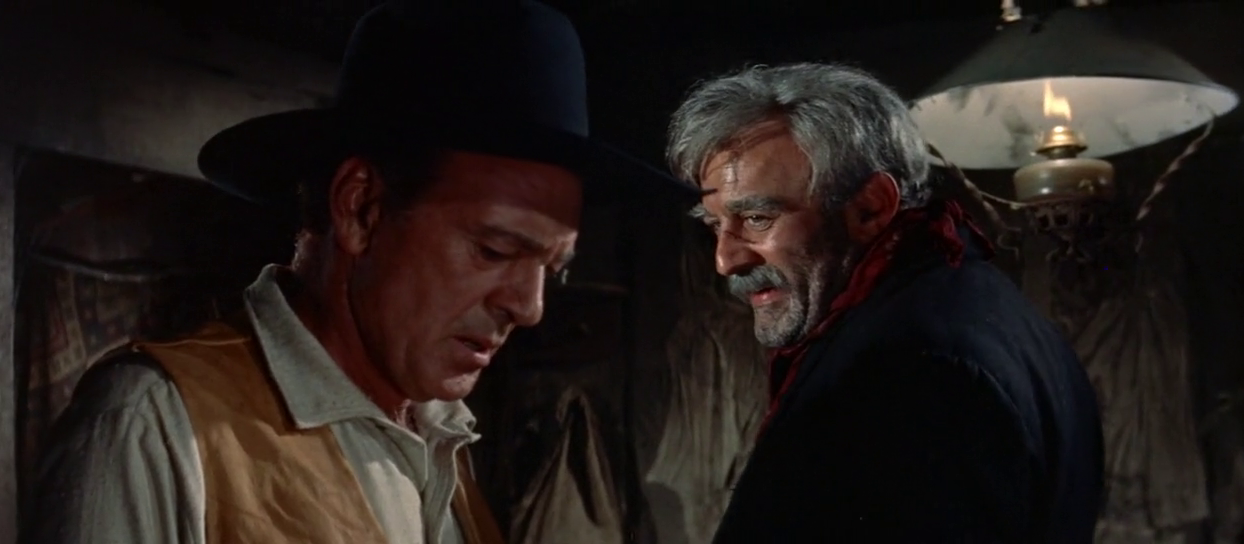
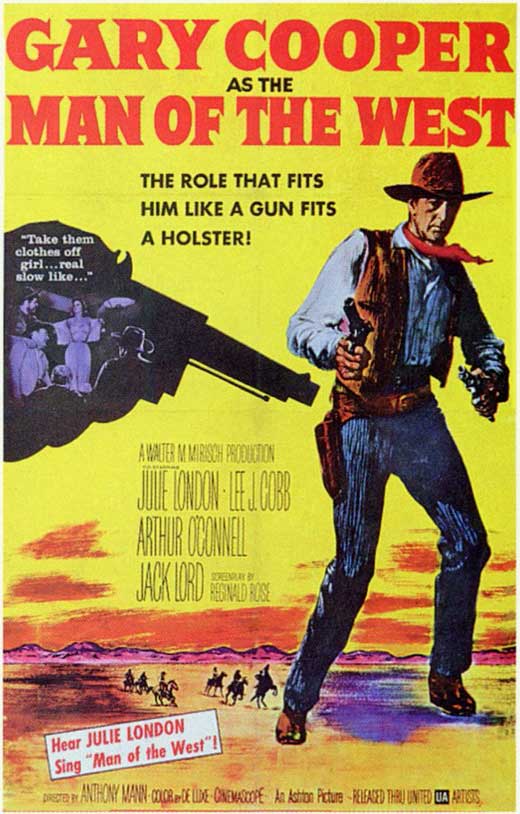
“God have mercy on my black bloody soul.”
Anthony Mann is a key figure when it comes to revisionist Westerns; one of pioneers who brought a psychological bent to his stories and examined the archetypes of the genre. He also wasn’t afraid to get a bit risqué, as evidenced by Man of the West, a nasty little chamber drama that mostly takes place within the dank confines and barren surroundings of a bandit gang’s dingy hideout.
Though he had a long and fruitful collaboration with James Stewart, Mann elected to work with Gary Cooper on Man of the West, giving the aging actor a role that fit him “like a gun fits a holster” (and ruining the director’s relationship with Stewart in the process). Cooper portrays Link Jones, a reformed outlaw who finds himself pulled back into his former way of life when he crosses paths with his old gang. Traveling across the Texas countryside in search of a schoolteacher for his small settlement town, Link is left on the side of the tracks along with two others when raiders attempt to hold up a passenger train during a routine stop. Recognizing the terrain, Link and his company make their way to his old haunt, where he finds his former mentor and a band of obstreperous young acolytes waiting to torment them. In order to survive and return to the civilized world he’s discovered, he must embrace the savagery of his youth and pursue absolution through violence; an inner transformation that is sickening and alarming.
In the early portion of the film, we are unable to get a read on our protagonist, his situation, or even the tone of the story. At the station, Link appears unfamiliar with the concept of rail travel. “That’s the ugliest thing I ever saw in my life,” he says to Beasley (Arthur O’Connell), a bubbly chatterbox who immediately appears to have ulterior motives. “You never saw my ex-wife,” Beasley replies with a laugh. Link is soon approached by a lawman who seems to recognize him, but he gives him a false name and says he’s from a little settlement called Sawmill, when just a minute ago (in movie time) he had told the livery stable proprietor that he was from Good Hope and used his real name. The breezy tone is kept up when Link gets on the train and spends a good thirty seconds wedging his lanky frame into the confined seat, then panics when the train starts moving.
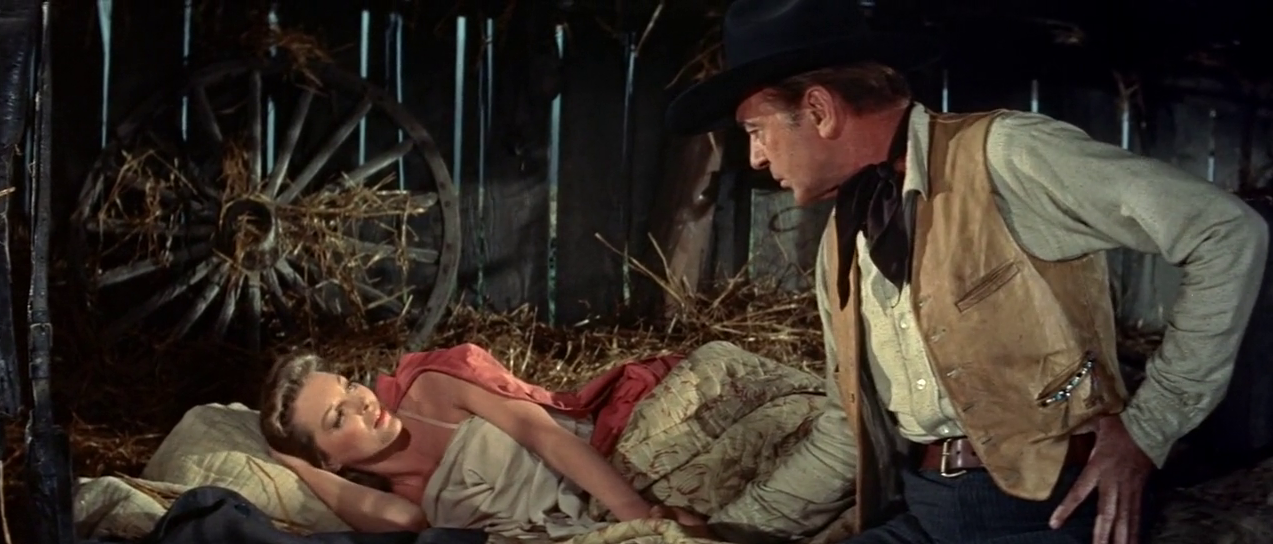
But once the botched heist leaves Link and Beasley stranded in the wilderness along with Billie (Julie London) and her high heels, the film starts to take on a harsher tone. Stumbling to the old hideaway, marked by dead trees and discarded animal carcasses, Link suggests that the other two huddle up in the barn while he goes to check if the place is abandoned. “I used to live here once,” he says. “When you were a boy?” Billie asks. “I don’t know what I was.” His knock receives no answer, but when he pushes open the door, he’s greeted by the barrel of a gun. The rickety old farmhouse is occupied by the same gang (Jack Lord, Royal Dano, John Dehner, Robert J. Wilke) that had tried to rob the train, and they don’t buy Link’s suggestion that he happened to stumble upon the place by accident. His cover story is completely blown when the wretched old Dock Tobin (Lee J. Cobb), Link’s uncle/surrogate father and the bandit ringleader, drunkenly hobbles out from the shadows in disbelief and begins to ramble on about their glory days in gory detail. (“God forgive us, we painted the walls with blood!”) Sensing that his survival depends on his perceived motives, Link changes his story, now suggesting that he’s returned to Dock because the straight life just wasn’t working out for him; he’s in the mood for more killing and stealing. The goons are still unsure—especially the jittery Coaley (Lord), who seems poised to take a life at any time—but Dock is the leader and decides to tentatively welcome Link back into the fold.
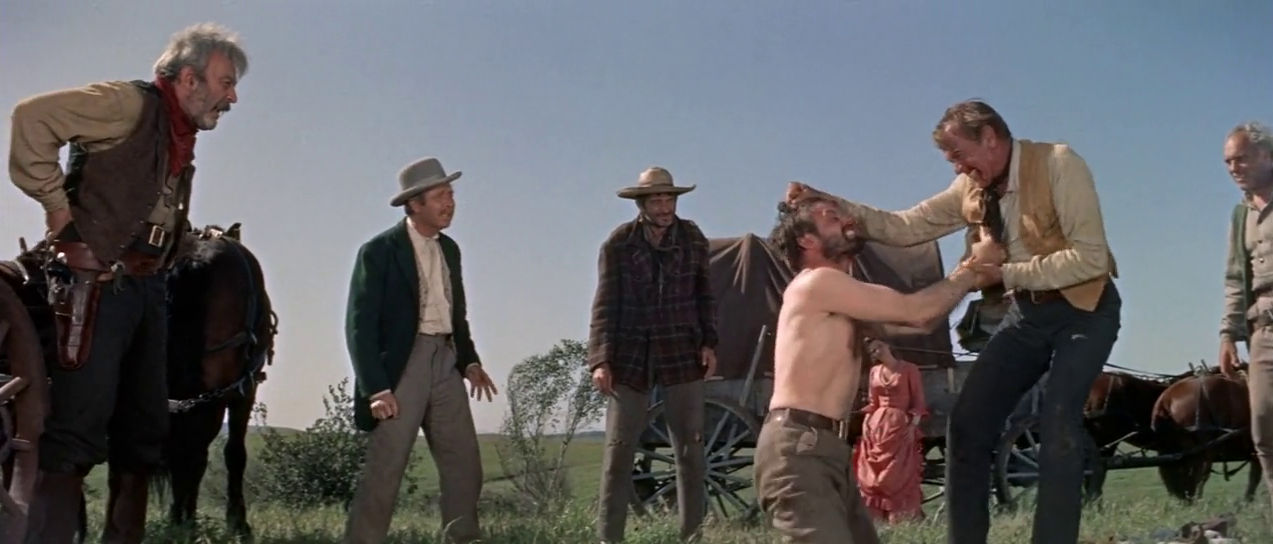
At this point, the film diverges from the regular contours of a Western and becomes primarily a psychological drama tinged with malice. Link, at one time the heir-apparent to Dock’s mantle, feels compelled to pose as a hardened outlaw, when in reality his disposition is gentle and meek. Unarmed and physically diminished, he tries to shrewdly outwit Dock and his wild card underlings—he claims that Billie is his woman to try to protect her from their advances, and takes the lead in a proposed bank robbery—but a constant threat of violence looms over every terse conversation. At the center of this grim ordeal is a scene that belongs in a horror film: as Coaley holds a knife to Link’s throat, blood trickling out where the blade has broken skin, Billie is forced to remove her clothes in front of the whole gang. It’s harrowing but tastefully shot, more concerned with conveying Link’s powerlessness than Billie’s humiliation. This blunt approach to violence holds through the rest of the film, including a sanctioned fist fight between Link and Coaley that provides little catharsis as Coaley howls like a banshee while his own clothes are ripped off of him. Indeed, once the idea of castration makes an appearance and a rape actually occurs, one begins to wonder if Man of the West had an influence on The Last House on the Left or The Texas Chainsaw Massacre and their sadistic coteries and abandoned backwaters.
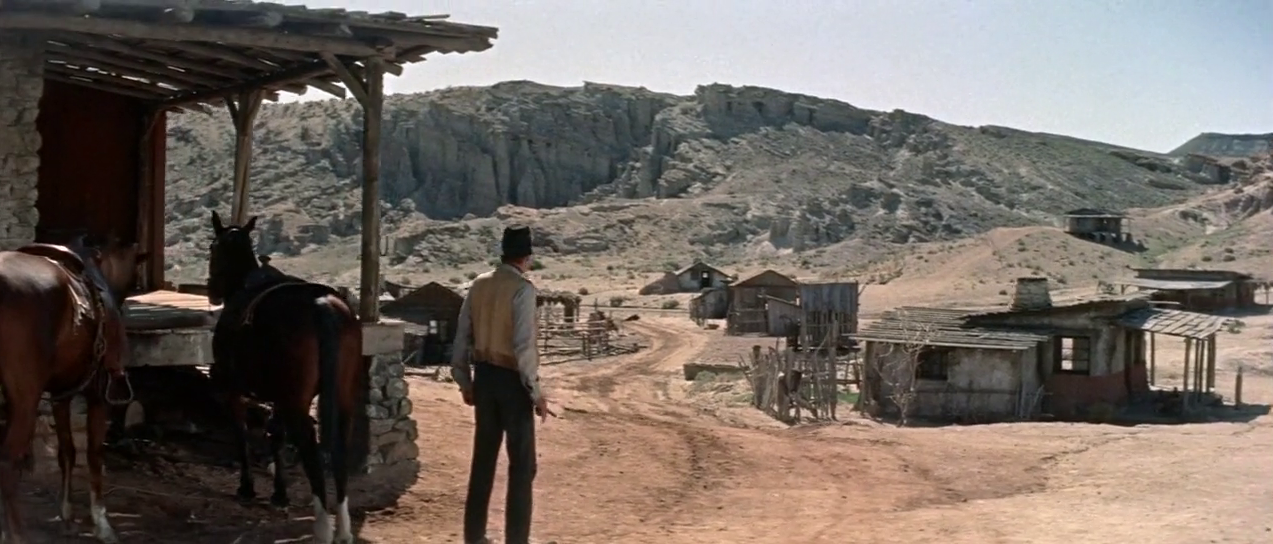
Amidst the excruciating slow burn, it’s easy to overlook Mann’s astute craft. His every decision, from settings, to color schemes, to blocking, to lighting, to scripting, to editing, is in service of telling an engaging story. Link’s inner struggle is matched by the external conflict, and both are supported magnificently by the shifting background scenery that is gradually drained of color and structure, culminating in a trip to a desolate ghost town. The clash between Cobb’s theatrical flair and Cooper’s restrained style is used to great effect, as is Cooper’s reputation as an icon of forthrightness. Indeed, I’d be hard-pressed to identify a single moment of subtext or technical showboating that doesn’t also work toward the ultimate aim of immersive storytelling (maybe the feigned naiveté in the early scenes; maybe the shot of the fist fight where the camera peeks through the spokes of a wagon wheel). But the story of Man of the West, laced with palpable menace and conveyed with such mastery, gives us much to ponder regarding the fading frontier and the persistent struggle to live down past mistakes. Though it can be viewed as a culmination of sorts—studio filmmaking was soon to change, the careers of both Mann and Cooper would quickly wrap up—the film’s DNA can be traced forward through the various incarnations of the Western that followed, including the works of Peckinpah and Leone.